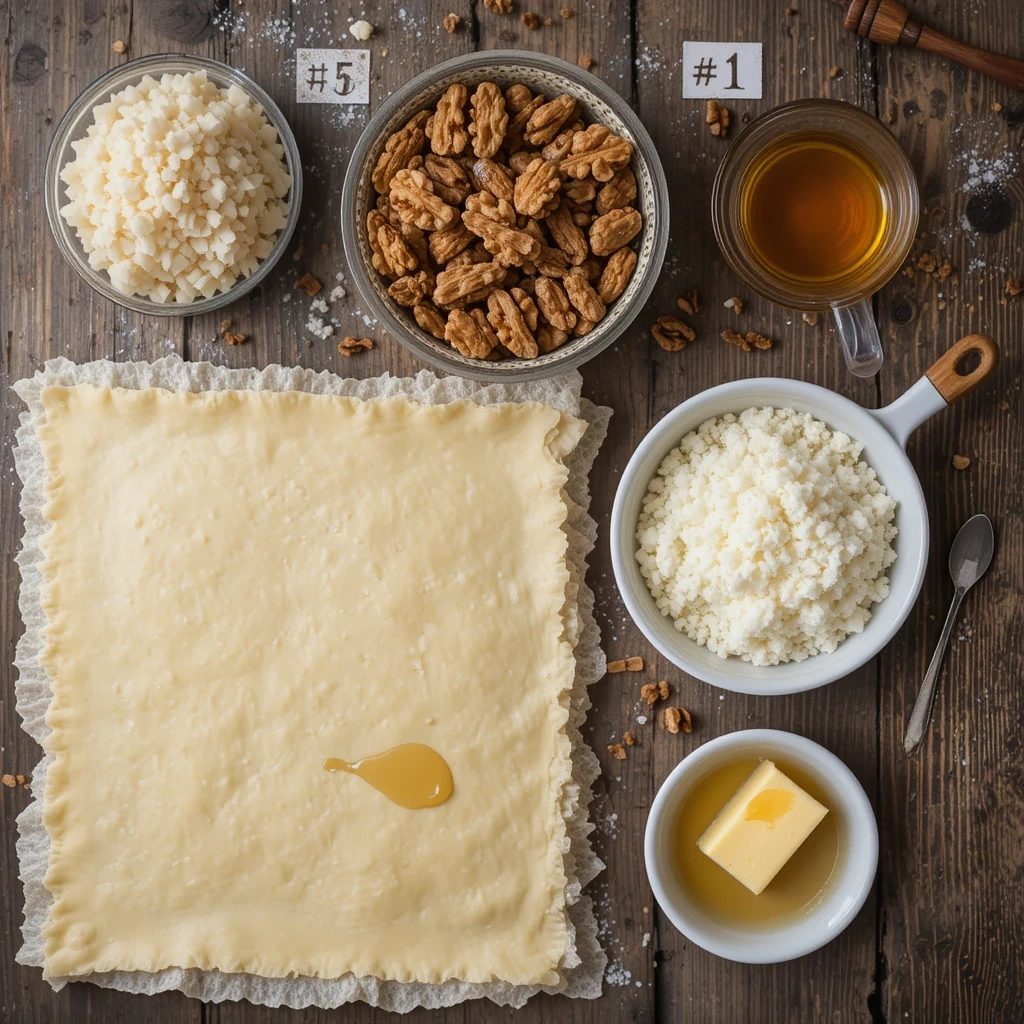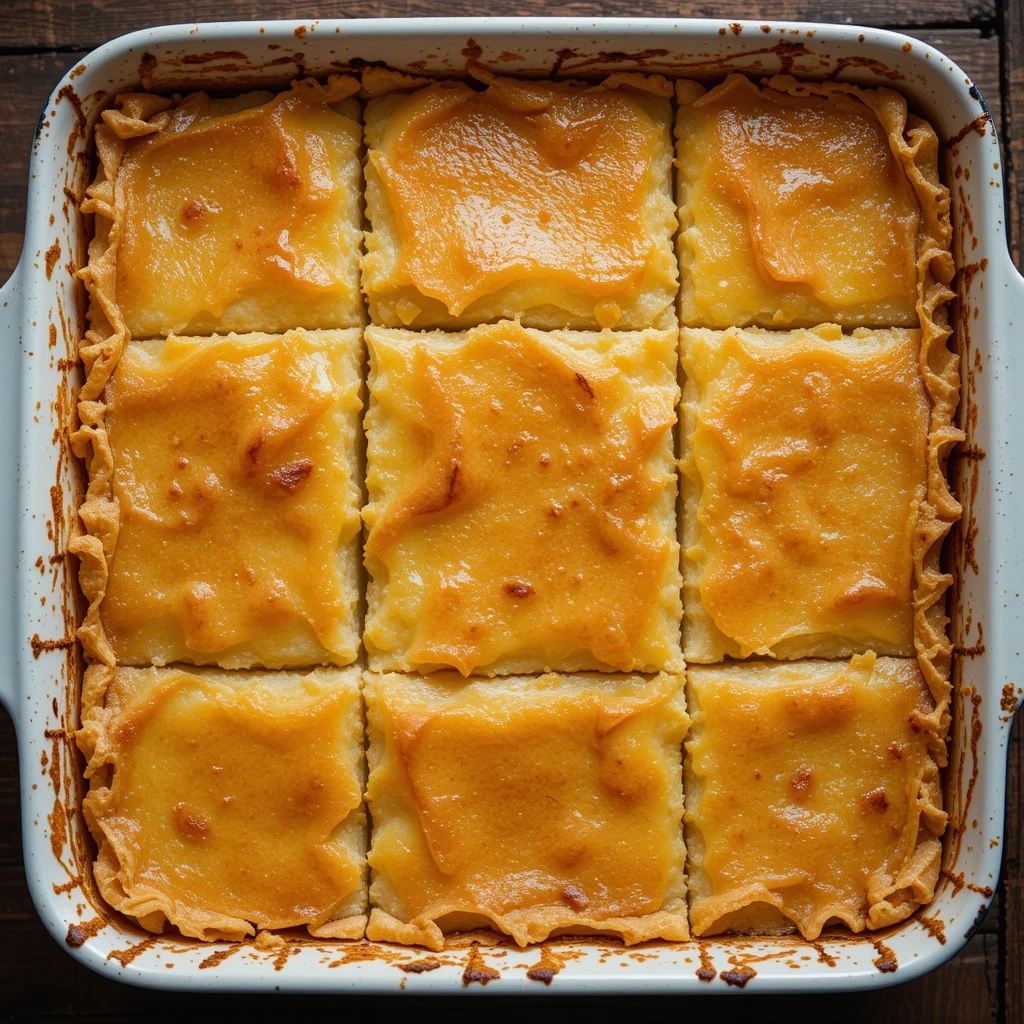Greek desserts evoke images of sun-drenched tavernas filled with the sweet aroma of honey and spices. The rich culinary heritage of Greece offers delightful sweets passed down through generations. From baklava’s crisp layers to galaktoboureko’s luscious creaminess, each treat tells a story of tradition and love. These accessible desserts require just a few ingredients and some patience to bring a taste of Greece into your kitchen, inspiring you to explore and create cherished memories.
When I think of Greek desserts, my mind immediately drifts to sun-drenched afternoons spent in quaint tavernas, where the air is filled with the sweet aroma of honey and spices. The rich culinary heritage of Greece is not just about savory dishes; it’s also a treasure trove of delightful sweets that have been passed down through generations. From the crisp layers of baklava to the luscious creaminess of galaktoboureko, each sweet treat conveys a story steeped in tradition and love.
I remember the first time I tasted a slice of baklava at a family gathering; the combination of nuts, honey, and phyllo pastry was nothing short of magical. It was then that I realized that these desserts are not just food; they are an experience, a celebration of life and culture. As I embarked on my journey to recreate these classic Greek desserts at home, I discovered that they are surprisingly accessible.
With just a few ingredients and some patience, anyone can bring a taste of Greece into their kitchen. In this article, I’ll share my personal experiences and step-by-step guides to making some of the most beloved Greek sweets. Whether you’re a seasoned baker or a novice in the kitchen, these recipes will inspire you to explore the world of Greek desserts and perhaps even create your own cherished memories.
Table of Contents
Step-by-Step Guide to Making Baklava
Baklava is often hailed as the crown jewel of Greek desserts, and for good reason. When I first tried to make baklava, I felt a mix of excitement and intimidation.. The delicate layers of phyllo pastry seemed daunting, but I soon learned that the key is to take it slow and enjoy the process.
First, collect your ingredients: phyllo pastry, walnuts or pistachios, butter, sugar, cinnamon, and honey. The combination of these elements creates a symphony of flavors that is simply irresistible. Start by heating your oven and getting your baking dish ready.
As I layered the phyllo sheets, brushing each one with melted butter, I felt a sense of accomplishment with every layer added. Once the nut mixture was spread evenly between the layers, I cut the baklava into diamond shapes before baking it to golden perfection. The scent filling my kitchen was divine.
After baking, the final touch was pouring a warm honey syrup over the hot baklava, allowing it to soak in and create that signature sticky sweetness. The first bite was pure bliss, and I couldn’t help but share my creation with friends and family who were equally enchanted by this classic treat.

Creating the Perfect Galaktoboureko
Galaktoboureko is another Greek dessert that holds a special place in my heart. This pastry, filled with custard and wrapped in crispy phyllo dough, is soaked in syrup for a delightful treat.. My first attempt at galaktoboureko was during a holiday gathering when I wanted to impress my relatives with something homemade.
The process began with making the custard from scratch, which involved simmering milk with semolina and sugar until it thickened into a creamy delight. I remember stirring the mixture while reminiscing about my grandmother’s galaktoboureko, which always had a hint of lemon zest that brightened the flavors. Once the custard was ready, I carefully layered the phyllo sheets in my baking dish, just as I had done with baklava.
The trick is to keep the phyllo covered with a damp cloth to prevent it from drying out. After pouring the custard over the layers and topping it with more phyllo, I baked it until golden brown. The moment I poured the syrup over the hot galaktoboureko was magical; it sizzled and soaked into every crevice.
When I served it to my family, their delighted expressions were all the validation I needed. Each bite was a perfect balance of creamy custard and crispy pastry, reminding me of home and tradition.
Indulge your sweet tooth without compromising your health goals with Veibrant Recipes’ guide on Protein Desserts. This comprehensive resource offers step-by-step instructions for creating high-protein treats like brownies, cookies, and cheesecakes, each designed to satisfy cravings while providing nutritional benefits. Learn how to select the right protein powders, incorporate wholesome ingredients like almond flour and natural sweeteners, and master techniques to enhance flavor and texture. Whether you’re aiming to support muscle recovery or simply enjoy a guilt-free dessert, this guide has you covered.

Mastering Loukoumades: Greek Honey Puffs
| Recipe Name | Mastering Loukoumades: Greek Honey Puffs |
|---|---|
| Preparation Time | 20 minutes |
| Cooking Time | 20 minutes |
| Total Time | 40 minutes |
| Servings | 4-6 |
| Calories per Serving | 250 |
Loukoumades are perhaps one of the simplest yet most satisfying Greek desserts to make at home. These little honey puffs are light, airy, and drizzled with syrup, making them an irresistible treat. My first experience with loukoumades was at a local Greek festival where they were served fresh and warm.
The moment I bit into one, I was hooked on their fluffy texture and sweet flavor. Inspired by that experience, I decided to try making them myself. The process begins with mixing flour, yeast, sugar, and water to create a dough that rises beautifully.
As I waited for the dough to double in size, I couldn’t help but feel excited about what was to come.When I was ready, I carefully placed spoonfuls of dough into the hot oil, observing as they expanded and became golden brown. The smell was intoxicating!
After draining them on paper towels, I drizzled them with honey syrup and sprinkled them with cinnamon. The first bite transported me back to that festival; they were warm, sweet, and utterly delightful. Sharing them with friends made the experience even more special as we reminisced about our favorite Greek memories.

Crafting a Traditional Greek Yogurt with Honey and Nuts
Greek yogurt is not just a staple in many households; it’s also a canvas for creating simple yet delicious desserts. One of my favorite ways to enjoy it is by drizzling it with honey and topping it with nuts—a combination that is both satisfying and nutritious. My journey with Greek yogurt began when I discovered how easy it is to make at home using just milk and yogurt cultures.
My initial attempt at creating it from scratch was an experiment that pleasantly succeeded. After straining the yogurt to achieve that thick consistency we all love, I served it in bowls topped with generous amounts of honey and a sprinkle of walnuts or almonds. The contrast between the creamy yogurt and the sweet honey was heavenly.
It became my go-to dessert for gatherings because it’s not only delicious but also visually appealing when served in elegant bowls. Each spoonful felt like a celebration of simplicity—proof that sometimes less is more when it comes to dessert.

Tips for Perfecting Your Greek Dessert Presentation
Presentation can elevate any dessert from ordinary to extraordinary, and Greek desserts are no exception. When I first started making these treats, I often overlooked how important it was to present them beautifully. However, after seeing how much joy a well-presented dish can bring to friends and family, I made it a point to focus on aesthetics as well as taste.
For baklava, I learned that serving it on a decorative platter garnished with crushed nuts or edible flowers adds an elegant touch. For galaktoboureko, dusting powdered sugar on top right before serving creates an inviting look that makes everyone eager to dig in. Loukoumades can be arranged on a tiered stand drizzled with honey for an eye-catching display that draws attention.
And for yogurt with honey and nuts, using clear glass bowls allows the layers to shine through while adding a rustic charm. These small details not only enhance the visual appeal but also make each dessert feel like a special occasion.
Elevate your dessert repertoire with the Pumpkin Baklava recipe from Allrecipes. This innovative twist on the classic Middle Eastern pastry incorporates shredded pumpkin into the traditional layers of phyllo dough and chopped walnuts. The filling is enhanced with panko breadcrumbs, olive oil, sugar, and ground cinnamon, providing a delightful balance of textures and flavors. A homemade syrup made from white sugar, water, cinnamon sticks, and citrus peels is poured over the baked pastry, infusing it with a sweet and aromatic finish. This recipe offers a unique fusion of flavors, making it a perfect addition to your fall dessert lineup.AllrecipesAllrecipes
Exploring Variations and Flavors in Greek Desserts
One of the most exciting aspects of Greek desserts is their versatility; there are countless variations that reflect regional ingredients and personal preferences. As I delved deeper into Greek sweets, I discovered unique twists on traditional recipes that sparked my creativity in the kitchen. For instance, while baklava is typically made with walnuts or pistachios, experimenting with almonds or even chocolate can yield delightful results.
Similarly, galaktoboureko can be infused with different flavors such as orange blossom or rose water for an aromatic twist that transports you straight to Greece’s sun-kissed shores. Loukoumades can be dressed up with various toppings like chocolate sauce or sprinkles for a fun twist on this classic treat. Each variation tells its own story while still honoring the essence of traditional Greek desserts—an exploration that has made my baking adventures even more enjoyable.
5 Common Mistakes to Avoid and Their Solutions
As with any culinary endeavor, making Greek desserts comes with its own set of challenges. Throughout my baking journey, I’ve encountered several common mistakes that can easily be avoided with a little knowledge and preparation. One mistake I made early on was not properly thawing phyllo dough before use; this led to tearing and frustration during assembly.
Now, I always allow it to thaw overnight in the refrigerator for best results. Another pitfall is overbaking desserts like baklava or galaktoboureko; keeping an eye on them during baking ensures they achieve that perfect golden color without becoming too dry. Additionally, not allowing syrup to cool before pouring it over hot pastries can result in sogginess—something I’ve learned through trial and error!
Lastly, measuring ingredients accurately is crucial; using too much flour or sugar can throw off the balance of flavors in your dessert. By being mindful of these common mistakes and their solutions, you’ll be well on your way to mastering classic Greek desserts at home. In conclusion, making classic Greek desserts at home has been an enriching experience filled with delicious discoveries and cherished memories.
From baklava to loukoumades, each recipe offers a glimpse into Greece’s rich culinary heritage while allowing us to create our own traditions in the kitchen. So gather your ingredients, invite some friends over, and embark on this sweet journey—you won’t regret it!
FAQs
What are some classic Greek desserts?
Some classic Greek desserts include Baklava, Galaktoboureko, Loukoumades, and Greek Yogurt with Honey and Nuts.
What is Baklava?
Baklava is a sweet pastry made of layers of filo filled with chopped nuts and sweetened with syrup or honey.
How do you make Baklava? To make Baklava, you will need filo pastry, nuts, sugar, butter, and a syrup made of water, sugar, and honey. The filo and nut mixture are layered and baked, then the syrup is poured over the baked pastry.
What is Galaktoboureko?
Galaktoboureko is a traditional Greek dessert made with layers of crispy filo pastry and a creamy custard filling, topped with a sweet syrup.
How do you make Galaktoboureko?
To make Galaktoboureko, you will need filo pastry, milk, sugar, semolina, eggs, butter, and a syrup made of water, sugar, and lemon. The custard is made, layered with filo, baked, and then the syrup is poured over the baked pastry.
What are Loukoumades?
Loukoumades are Greek honey puffs, deep-fried dough balls drizzled with honey and sprinkled with cinnamon and nuts.
How do you make Loukoumades?
To make Loukoumades, you will need flour, yeast, sugar, water, and honey for the dough, and honey, cinnamon, and nuts for the topping. The dough is fried until golden brown, then drizzled with honey and sprinkled with cinnamon and nuts.
What is Greek Yogurt with Honey and Nuts?
Greek Yogurt with Honey and Nuts is a simple and delicious dessert made with thick, creamy Greek yogurt, drizzled with honey and topped with chopped nuts.
How do you make Greek Yogurt with Honey and Nuts?
To make Greek Yogurt with Honey and Nuts, you will need Greek yogurt, honey, and your choice of nuts. Simply spoon the yogurt into a bowl, drizzle with honey, and sprinkle with chopped nuts.
What are some tips for perfecting Greek dessert presentation?
Some tips for perfecting Greek dessert presentation include using traditional serving dishes, garnishing with fresh fruits or herbs, and drizzling with honey or syrup for an extra touch of sweetness.
What are some common mistakes to avoid when making Greek desserts? Some common mistakes to avoid when making Greek desserts include overbaking the filo pastry, not allowing the syrup to fully soak into the pastry, and using low-quality ingredients.

greek desserts
Ingredients
- Phyllo pastry
- Nuts walnuts, pistachios, almonds
- Butter
- Sugar
- Cinnamon
- Honey
- Milk
- Semolina
- Yogurt
- Yeast
- Pros:
- Classic Greek desserts are easy to make at home with the right ingredients and techniques.
- Versatile and can be adapted to personal preferences.
- Offer a glimpse into Greece’s rich culinary heritage.
- Visually appealing when served in elegant bowls.
- Cons:
- Can be time-consuming phyllo dough preparation.
- Potential for common mistakes e.g., not thawing phyllo dough properly, overbaking.
- Requires attention to detail for perfect results.
Instructions
- Baklava: Layer phyllo dough with a nut mixture, bake, and soak in a sweet syrup.
- Galaktoboureko: Layer phyllo dough with a creamy semolina custard, bake, and soak in syrup.
- Loukoumades: Fry dough balls until golden brown, then drizzle with honey and sprinkle with cinnamon.
- Greek Yogurt with Honey and Nuts: Strain yogurt, drizzle with honey, and top with nuts.


1 thought on “5 Easy Steps to Make Classic Greek Desserts at Home”